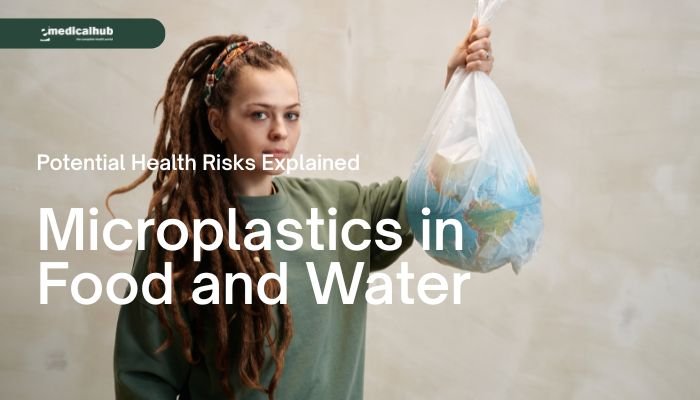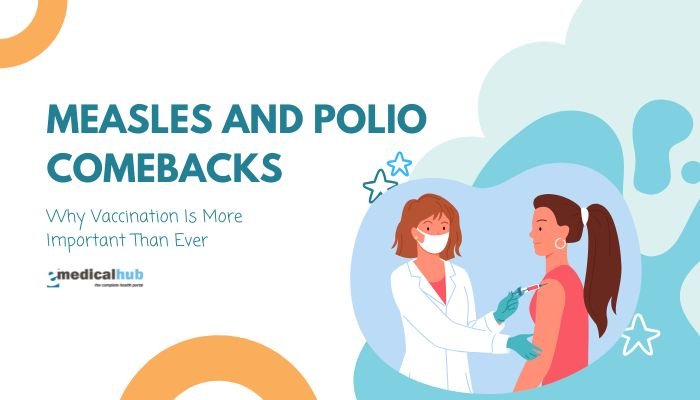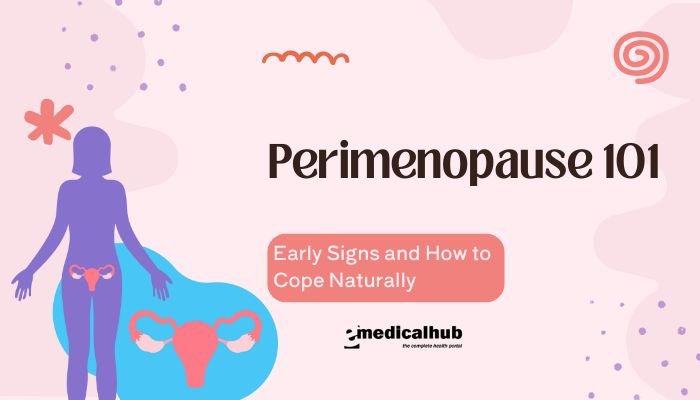Introduction
Microplastics—tiny fragments of plastic less than 5 millimeters in size—have emerged as a global concern, increasingly found in diverse habitats from remote mountain peaks to the deepest ocean trenches.
These small particles can come from larger plastic debris breaking down or be intentionally engineered as microbeads in cosmetics and household products. Evidence now shows that microplastics infiltrate the food and water we consume daily, leading to questions about their potential impacts on human health.
While the discussion about plastic pollution often centers on visible debris like bottles or bags, microplastics highlight a subtler but pervasive aspect of the problem. Traces of these particles have been detected in drinking water, marine life, agricultural soils, and table salt, suggesting near-ubiquitous exposure.
Yet, the human health implications remain an area of intense scientific scrutiny, with ongoing research uncovering concerns about ingestion, toxicity, and the unknown long-term outcomes of chronic exposure.
This article reviews current knowledge on what microplastics are, how they enter our food and water supplies, potential health risks, and ongoing debates in the scientific community. We’ll also address ways consumers, producers, and policymakers can mitigate microplastic contamination—both at the personal and systemic level.
Understanding the interplay between plastic waste, environmental contamination, and health helps us chart a course for safer, more sustainable management of plastics in everyday life.
What Are Microplastics?
Definition and Types
- General Definition: Microplastics are plastic particles smaller than 5 mm in diameter (about the size of a sesame seed or smaller). They range down to microscopic scales (<1 µm).
- Primary Microplastics: Intentionally small plastics, such as microbeads in personal care products (toothpaste, exfoliants), or resin pellets used as raw materials in manufacturing.
- Secondary Microplastics: Result from the breakdown or weathering of larger plastic items—bags, bottles, fibers from clothing—into progressively tinier fragments.
Sources in the Environment
- Industrial Activities: Plastic production, packaging, or pellet spills.
- Consumer Products: Clothing (synthetic fibers in laundry water), cosmetics with microbeads, tire wear.
- Degradation Pathways: UV radiation, wave action, and friction degrade macroplastics into micro-sized pieces over time.
Distribution in Nature
- Marine and Freshwaters: Rivers transport plastic litter to oceans; wave action disperses them widely.
- Soils and Agriculture: Microplastics can accumulate in agricultural lands through plastic mulching or sludge-based fertilizers.
- Atmospheric Fallout: Studies show microplastics also travel via wind, depositing on land or in water from the air.
Key Point: The massive reliance on single-use and durable plastics means microplastic formation occurs globally, even in remote or “pristine” regions.
How Microplastics Enter Our Food and Water
Contamination of Water Supplies
- Tap Water: Microplastic fibers or fragments can slip through some filtration processes if they’re extremely fine. Studies in multiple countries have found microplastics in a large percentage of tap water samples.
- Bottled Water: Surprisingly, bottled water has also shown microplastic presence, possibly from packaging, bottling processes, or bottle caps.
- Groundwater: In heavily polluted areas, microplastics can leach from soils into aquifers, though data is limited.
Seafood and Aquatic Organisms
- Marine Food Chain: Fish, shellfish, and marine mammals ingest microplastics mistaking them for prey, or filter them from water. These particles can accumulate in organisms’ digestive tracts.
- Filter Feeders: Bivalves (oysters, mussels) or plankton ingest suspended particles; humans then eat them.
- Aquaculture: Fish or shrimp farms in contaminated waters can inadvertently incorporate microplastics into feed or environment.
Agricultural Products
- Soil to Plate: Microplastics in soil—via plastic mulch film fragmentation, sludge fertilizers—may be taken up by crops or cling to produce.
- Field Irrigation: If water used for irrigation is contaminated, it can deposit plastic fragments on plant surfaces or in soils.
- Livestock Feed: Animal feed can also hold microplastics, which get transferred into animal-based foods like milk or meat in trace amounts (though less studied).
Packaging and Processing
- Plastics in Food Industry: Wrapping, containers, or single-use utensils can shed microplastics, especially if heated or mechanically stressed.
- Transportation: Micro abrasions in plastic crates or lines might introduce fragments.
Potential Health Risks
Physical Effects
- Gastrointestinal Irritation: Larger microplastics (≥20 µm) might remain in the digestive tract briefly, though many are excreted. Concerns arise if chronic ingestion leads to mild inflammation or interference with gut microbiota.
- Tissue Uptake: Nanoplastics (≤100 nm) could theoretically pass through cell membranes or cross bodily barriers, though direct human evidence is still emerging.
Chemical Additives and Contaminants
- Additives in Plastics: BPA (bisphenol A), phthalates, flame retardants, etc. Some microplastics might leach these chemicals into tissues, with possible endocrine-disrupting or toxic consequences.
- Adsorbed Toxins: Microplastics act like sponges for pollutants (PCBs, pesticides, heavy metals) in the environment. If ingested, those chemicals may release in the body.
- Bioavailability: The real impact depends on how strongly or quickly these contaminants detach from plastic surfaces inside the gut.
Immunological and Inflammatory Responses
- Immune Activation: Animal studies suggest microplastics can trigger immune cell recruitment, oxidative stress, or inflammatory markers.
- Allergic or Autoimmune Potential: Still under exploration, but some researchers worry chronic microplastic presence might modulate immune responses.
Uncertainties and Research Gaps
- Long-Term Exposure: The majority of human-based research is observational or modeled. Hard data on cumulative lifetime ingestion effects remain limited.
- Dose Threshold: We lack clarity on how many microplastic particles or how large a daily dose is potentially harmful.
- Variability: Plastics differ in polymer type, shape, chemical additives, or size—leading to varied toxic profiles.
Current Scientific Consensus and Debate
Evidence from Laboratory and Animal Studies
- Rodent Models: Some show that micro- and nanoplastics can deposit in tissues (liver, gut, bloodstream), causing subtle changes.
- Cell Culture: Human cell models reveal possible cytotoxic or inflammatory signals.
- Complexities: Real-world scenarios are more complicated—co-exposure with other pollutants, variations in diets, differences in human physiology.
Limitations in Human Epidemiological Data
- Measuring Intake: It’s challenging to quantify exactly how many microplastic particles each person ingests daily.
- Co-Factors: Diet, lifestyle, and location also affect exposure to chemicals. Hard to isolate microplastic impacts from other variables.
- Regulatory Stance: Agencies like the WHO or EFSA indicate microplastics in drinking water might not currently pose major health threats but caution that knowledge gaps remain significant.
Toward a Precautionary Approach
- Principle: Many experts advocate acting on potential hazards even before definitive evidence. Minimizing plastic pollution has broad environmental benefits anyway.
- Emerging Policy: Some governments or trade blocs explore limits on microbeads, stricter plastic usage, or mandatory studies on microplastic presence in foods.
Monitoring and Measurement Efforts
Analytical Techniques
- Microplastic Sampling: Filtration of water, extraction from seafood tissues, or separation from soil.
- Spectroscopic Identification: FTIR (Fourier transform infrared spectroscopy) or Raman spectroscopy to confirm polymer type and size range.
- Limits of Detection: Nano-scale detection is extremely difficult, leaving a knowledge gap about the smallest plastic fragments.
Data from around the Globe
- Marine Surface: Surveys reveal microplastic presence from the Arctic to the Southern Ocean.
- Freshwater Bodies: Rivers near urban or industrial sites can have higher microplastic loads that eventually reach oceans.
- Food Items: Studies found microplastics in table salt, honey, beer, fish, shellfish, and drinking water.
Standardization Challenges
- Different Methodologies: Variation in sampling approaches, definitions of microplastics, lab protocols hamper direct comparison across studies.
- Need for Uniform Protocols: Scientists push for global standards to compare results and identify trends more clearly.
Efforts to Reduce Microplastic Contamination
Cutting Plastic Waste at the Source
- Single-Use Plastics Ban: Many regions are phasing out straws, stirrers, or plastic bags, but broader coverage is needed.
- Extended Producer Responsibility: Policies requiring manufacturers to handle end-of-life recycling or disposal.
- Improved Recycling: Innovations in mechanical or chemical recycling can keep plastics out of the environment.
Technological and Industrial Innovations
- Biodegradable Alternatives: Materials that degrade more quickly in the environment, though some degrade only in specific industrial composting conditions.
- Closed-Loop Systems: Minimizing plastic breakage or spillage in manufacturing, shipping, or consumer use.
Regulatory Frameworks
- Microbead Bans: Numerous countries prohibit microplastics in personal care products, significantly lowering microplastic inflows to waterways.
- Monitoring and Enforcement: Strengthening oversight to ensure industries adhere to best practices for plastic pellet handling, stormwater management, etc.
Public Engagement
- Consumer Choices: Purchasing less plastic-wrapped goods, opting for reusable containers, supporting zero-waste shops.
- Cleanup Campaigns: Beach or river cleanups, though primarily tackling macroplastics, can reduce future microplastic formation.
- Awareness Campaigns: Educational content about how small daily changes, such as using laundry filters for synthetic clothing, can curb microfibre discharge.
Recommendations for Personal Protection
Filtering Drinking Water
- Certified Water Filters: Some household filters can reduce microplastic presence. Reverse osmosis or nanofiltration systems are more effective but come at higher cost.
- Avoid Bottled Water: Studies indicate bottled water can contain higher microplastic levels than tap water, partly from packaging.
Smart Food Choices
- Cooking Methods: Rinsing produce thoroughly, removing packaging carefully.
- Seafood Selection: While beneficial nutritionally, ensure variety, plus check advisories about microplastic or pollutant levels.
- Reduce Processed Foods: Some plastic packaging or processing lines might shed microplastics into final products.
Household Measures
- Avoid Heating Plastic: Microwaving or dishwashing plastic containers can accelerate microplastic shedding. Prefer glass or ceramic.
- Minimize Synthetic Clothing: When washing fleece or polyester, using a specialized laundry bag or filter reduces microfiber release into wastewater.
- Vacuum & Dust: Microplastic fibers from carpets or clothing settle as dust—regular cleaning can lower inhalation risk.
Advocacy and Involvement
- Support Clean-Up Initiatives: Bolster local volunteer groups or NGO-led river/ocean cleanup operations.
- Engage Politically: Encourage legislators to pass stricter plastic regulations or invest in advanced wastewater treatment facilities.
- Stay Informed: Keep up with emerging research for updated guidelines on water filtration or consumption advice.
Outlook: The Path Forward
Ongoing Research
- Toxicology: Investigating how different sizes/shapes of microplastics affect human cells.
- Long-Term Epidemiological Studies: Tracking populations over decades to discern if there’s a correlation between microplastic ingestion and disease incidence.
- Innovation: Novel materials that degrade innocuously, advanced separation technologies in water treatment, or engineered microorganisms that digest plastics.
Systemic Shifts
- Circular Economy: Minimizing raw plastic input and ensuring robust reclamation, so minimal plastic ends in landfills or oceans.
- Global Collaboration: Plastic pollution is transboundary. International treaties similar to climate or ozone conventions might be needed to standardize commitments.
Balanced Perspective
- Uncertainty in Risk: Current data doesn’t confirm an acute crisis for human health from microplastics, but the precautionary principle nudges us to reduce exposure where feasible.
- Multi-benefit Solutions: Reducing plastic usage cuts carbon footprint, lowers wildlife harm, and helps ocean health, thereby benefiting humans on multiple fronts.
Summary of Key Points
- Microplastics: Tiny plastic fragments from ~5 mm down to nano-scale, ubiquitous in air, water, soil, and consumer goods.
- Sources: Derived from breakdown of larger plastics, microbeads in cosmetics, synthetic clothing fibers, etc.
- Routes of Exposure: Ingestion via drinking water, fish and shellfish, produce grown in plastic-laden soils, or airborne dust.
- Health Risks: Potential for chemical leaching, immune response, or chronic inflammation—though uncertainty persists about the magnitude of harm.
- Environmental Drivers: Widespread plastic usage, poor waste management, recycling lags, plus synergy with climate factors.
- Remedial Measures: Government bans on microbeads, new packaging norms, advanced water filtration, consumer-level changes (avoiding single-use, using filters).
- Future: More research on long-term human health outcomes is crucial. Meanwhile, a precautionary approach encourages tackling plastic pollution comprehensively.
Conclusion
Microplastics in our food and water highlight the unforeseen costs of an era dominated by single-use plastics. While definitive links to major health hazards remain under investigation, the precautionary stance—reducing microplastic infiltration, fostering new plastic alternatives, better recycling—serves the environment and human well-being. By adopting more sustainable consumption habits, supporting robust waste management, and encouraging scientific innovation, we can limit microplastics’ pervasiveness and protect both ecosystems and public health.
Frequently Asked Questions (FAQ)
- Are microplastics in drinking water a significant health threat right now?
- WHO states no strong evidence of acute risk, but still calls for more data. Minimizing plastic exposure remains wise.
- Which foods have the most microplastics?
- Seafood (especially shellfish) and salt are frequently cited. Bottled water can also contain higher levels than tap water.
- How can I filter microplastics out of my tap water?
- Technologies like reverse osmosis, nanofiltration, or certain high-grade carbon filters may reduce microplastic particles.
- Do biodegradable plastics solve the microplastic problem?
- They may degrade faster under specific conditions, but partial or incomplete decomposition can still yield microplastics if not properly managed.
- Can microplastics get into the bloodstream or organs?
- Animal studies show that smaller particles (nanoplastics) might cross barriers. Human data is limited but suggests potential for some tissue uptake.
- Should I stop eating fish or shellfish?
- While fish can contain microplastics, they also provide critical nutrients. Experts recommend a varied diet, mindful sourcing, and continuing to follow evolving guidance.
- What’s the best step to reduce personal microplastic intake?
- Minimize single-use plastics, avoid microwaving plastic containers, filter tap water, and properly wash produce. Also, use microplastic capture devices for laundry if feasible.
References
- GESAMP. Sources, fate and effects of microplastics in the marine environment: Part 2. IMO/FAO/UNESCO. 2017;93:1-220.
- World Health Organization (WHO). Microplastics in drinking-water. 2019.
- Koelmans AA, et al. Risk assessment of microplastic in the ocean. Curr Opin Environ Sci Health. 2019;1:42-51.
- Van Sebille E, et al. A global inventory of small floating plastic debris. Environ Res Lett. 2015;10(12):124006.
- Cox KD, et al. Human consumption of microplastics. Environ Sci Technol. 2019;53(12):7068-7074.
- SAPEA. A Scientific Perspective on Microplastics in Nature and Society. European Commission. 2020.
- Prata JC, da Costa JP, Lopes I, et al. Environmental exposure to microplastics: an overview of the current knowledge. Environ Pollut. 2020;270:116029.
- Leslie HA, et al. Discovery and quantification of plastic particle pollution in human blood. Environ Int. 2022;163:107199.
- Gigault J, et al. Current opinion: What is a nanoplastic? Environ Sci Nano. 2021;8(5):1075-1081.
- Schwabl P, et al. Assessment of microplastic concentrations in human stool. Ann Intern Med. 2022;175(4):502-504.
- Enfrin M, Dumée LF, Lee J. Nano/microplastics in water and wastewater treatment processes – origin, impact and potential solutions. Water Res. 2019;161:621-638.
- Rochman CM. Microplastics research—from sink to source. Science. 2018;360(6384):28-29.
- UNEP. Single-use plastics: A roadmap for sustainability. 2018.
- FAO. Assessing the risks of microplastics to food safety. 2021.




